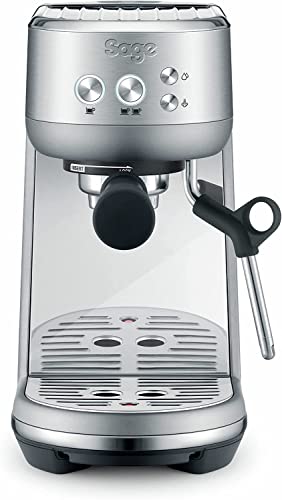How to Build a Professional Espresso Machine
This is a great choice for coffee shops and cafes who want to attract customers who are enthralled by barista and espresso. It's the official machine for World Barista Championships, and it shows.
The barista can refill the water reservoir throughout their shift. The machine comes with a hot water tap for tea and steam wands that cool-touch.
Water
A commercial espresso machine has to be able to produce an enormous amount of espresso-based drinks with efficiency. These machines are usually made of stainless steel, which is durable and resistant to breaks and scratches. Stainless steel espresso machines also make it easier to clean and maintain.
A top-quality machine should have an additional shut-off valve that is connected to the water pipe to prevent the build-up of limescale. This will ensure that any repairs are made to the affected components of the machine and won't impact the rest of your operation.
When choosing your water, make sure to test it and treat it correctly to ensure the best results. For example distillate water can be restored by adding a tiny amount of minerals back to it. It can improve the taste and reduce its erosive properties, however it can also damage certain machines. This is because the remineralized liquid will cause the boiler sensor to think that the machine is fully stocked, but it's not. This can cause overheating and possibly damaging the machine.
Grinder
The grinder is a crucial element for the success of an espresso machine. It takes a raw, unground bean and transforms it into a finely ground coffee that can be properly tamped into the filter basket, resulting in an excellent extraction.
Commercial-grade professional espresso machines typically have a built-in grinding unit that can be programmed to grind different drink sizes, ensuring consistency in results every time. Super-automatic espresso machines go one step further, by automating and programmable the entire process from brewing to grinding to dispensing. These machines are often praised by Lab tests for being easy to use.
Manual or semi-automatic machines require more work from the barista but often the results are worth it. This model won the Good Housekeeping Coffee Award in 2022 for its smart dosing system that is able to measure and distributes the right amount of coffee each time. It also features an infusion with low pressure for balanced extraction, and the milk frother produced dense, thick steamed milk during our tests.
Temperature
Temperature is a major element in espresso. If the water isn't in its optimal temperature, it can affect extraction and can cause a bitter cup of coffee.
Espresso machines that are of high-quality come with tools that can help you keep the correct temperature of your water. One method for doing this is by utilizing a PID, which monitors and adjusts the temperature of the water. Another method is making use of a double boiler. You can use one boiler to heat steam and water for tea, and use another to heat the water to brewing temperature.

Carles explains that these systems can be beneficial for large companies as well as baristas at home. They can help novices dial in the perfect espresso drink because they can keep an exact temperature and eliminate various variables that can alter the flavor quality. It's also much easier for baristas with more experience to make their espressos just the way they want.
Pressure
The pressure that an espresso machine uses is another factor that influences the quality of the coffee it makes. Many espresso drinkers notice that their beverages taste different based on the pressure they use, even if all other variables remain the same.
The majority of commercial machines utilize 9 bars of pressure in order to brew espresso. These machines are also likely to be pump-driven, not steam-driven. Although high-pressure machines are offered, they require a group head that is more sophisticated to handle the higher levels of pressure.
While you may find espresso machines advertising 15 or even 18 bars of pressure, nine bars are generally regarded as the gold standard for creating consistently excellent espressos. coffee and espresso maker -pressure machines are typically smaller and designed to be used at home.
In comparison, 9 bar of pressure is four times more than the pressure exerted by your car tire. The greater the pressure an espresso maker with professional quality can apply, the better it is in bringing out the flavor of your favorite coffee beans. It is worth investing in top-quality machines that can produce the best results.
Barista Skills
A barista should be able take orders and handle them quickly and accurately. This is especially crucial during busy periods in the coffee shop. Effective customer service skills are crucial for establishing relationships with customers and increasing the sales of the coffee shop. This could include recognizing regular customers, resolving problems efficiently, and remaining positive and helpful in difficult situations.
Baristas often need to be able to multitask, as they have to take orders as well as operate a cash register and share orders with colleagues and take phone calls all at once. This ability allows customers to enjoy an enjoyable experience at the coffee shop by ensuring that orders are served promptly.
It is important for a barista to have knowledge of the various kinds of drinks that can be prepared using an espresso machine. You can learn about the various kinds of espresso by studying about their characteristics, tasting them in person, or watching online videos. Many baristas find it beneficial to attend classes offered by various organizations.
